FROM THE CAVES IN THE HISTORIC CENTRE OF CALITRI (AV) IN CAMPANIA TO THE MODERN DAIRY, UP TO THE VOLTURARA IRPINA PLAIN, TO MEET THE FARMERS: WE TAKE YOU BACK THROUGH THE ENTIRE VALUE CHAIN OF CASEIFICIO D&D
We have been working with Luigi Di Cecca since 2009, but in the last few months we have seen each other more times than in 15 years. We went to Calitri in April with our "assortment team" - the people at Valsana who are in charge of research, selection and definition of the product catalogue. Then we went back at the end of May with all the sales guys.
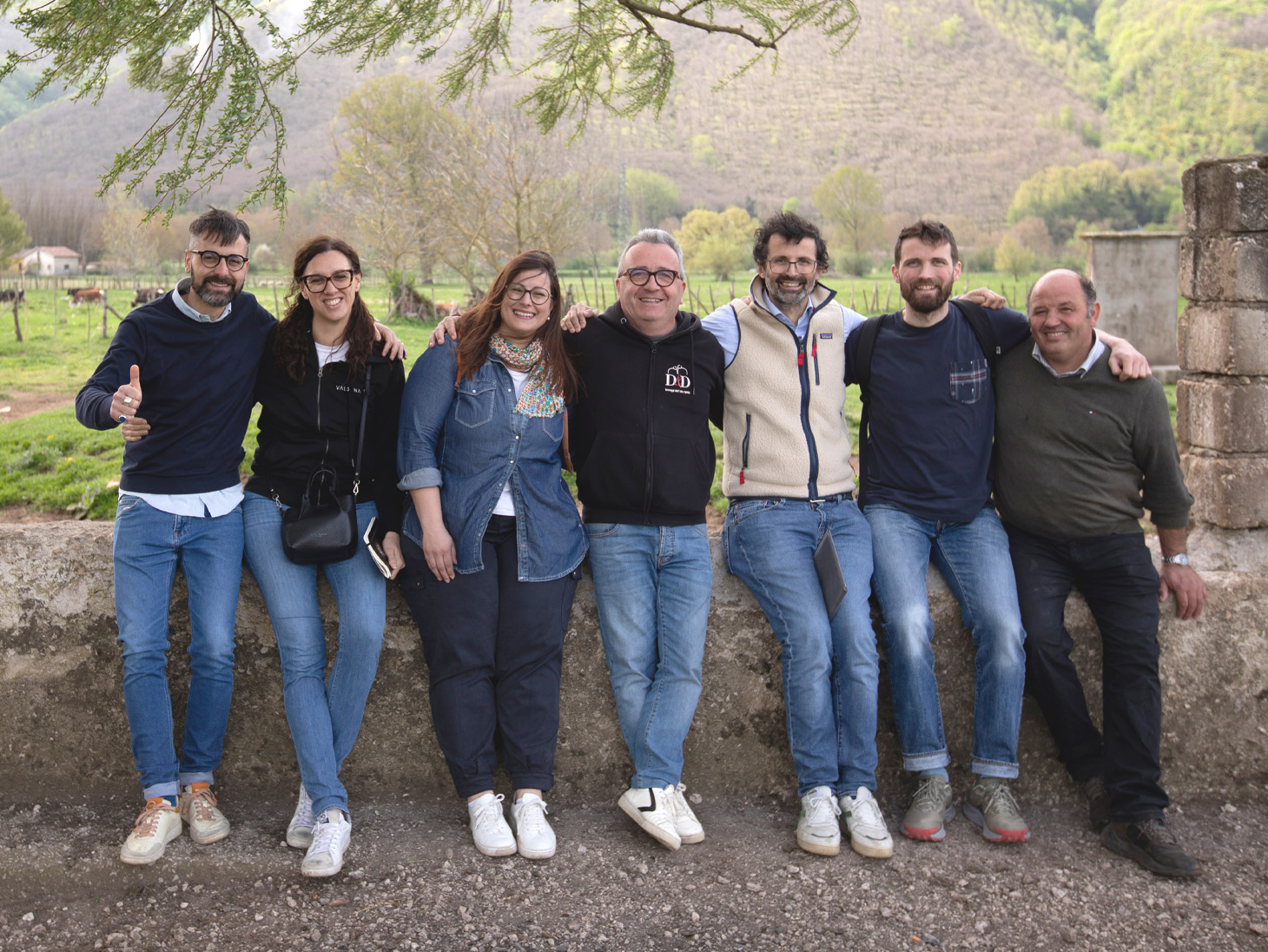
More recently, Luigi and Gianluigi presented a vertical tasting of Caciocavallo at "Sapori", our main event: the young Irpino, hung on the Caciocavalletto - a sort of tripod underneath which there is a grill -, the Irpino di Grotta, matured in caves, Pascolino and Schiena d'Asino. We start from the end, from the caves of Calitri, to tell you about our trip to Irpinia, a region located in the southern part of Campania at the border with Basilicata, and the suggestions we brought home with us.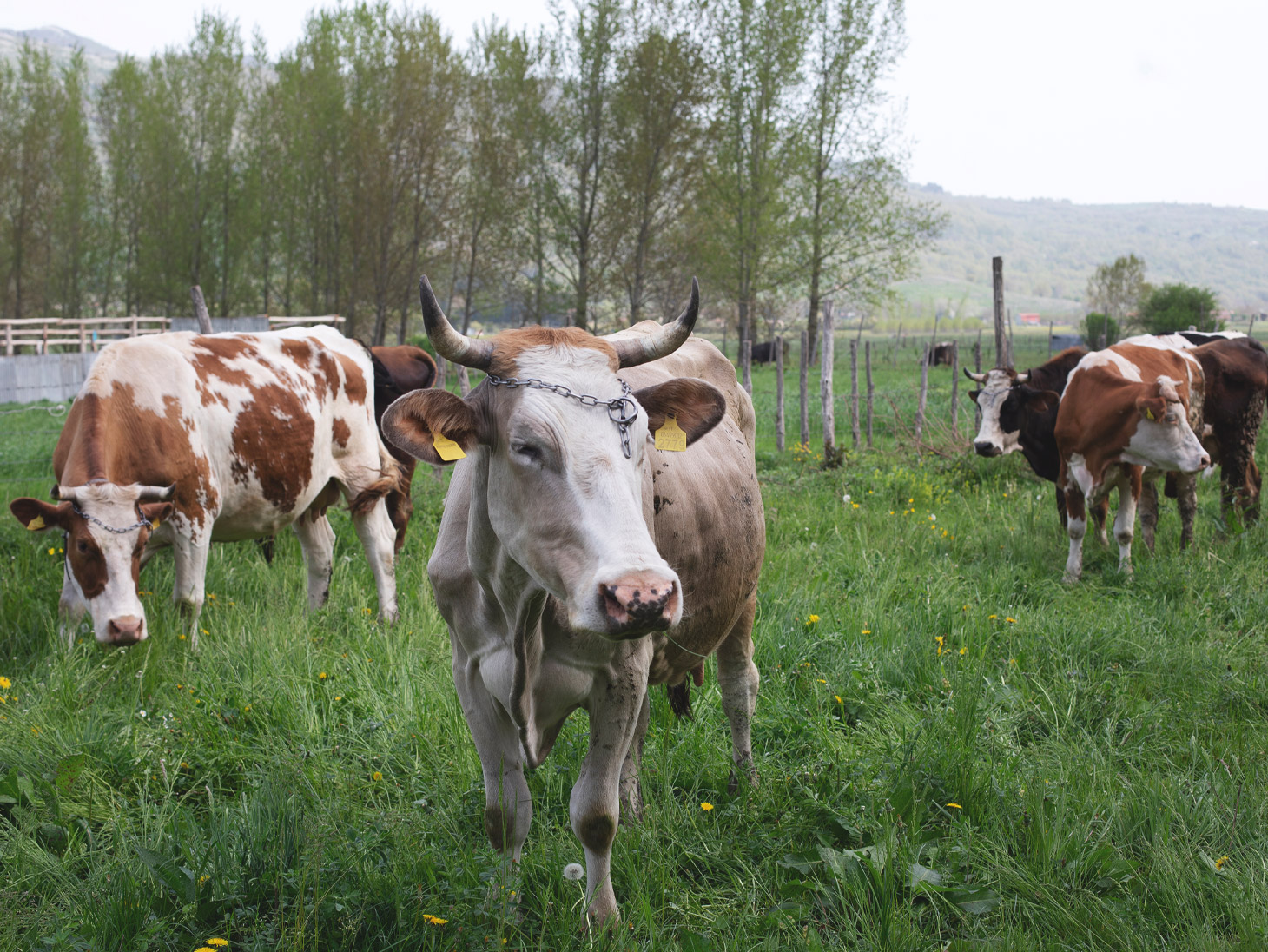
A municipality of 4,000 people, only 100 of them in the historic centre perched on a hill at an altitude of 500 metres, almost completely abandoned after the 1980 earthquake. The narrow streets that climb up into the Borgo Castello, the tight shutters of the stone houses snoozing on a rainy afternoon in early summer. The little streets are really narrow, the cars don't pass through: to take the caciocavallo cheese to the maturing caves, the guys use a three-wheeler van, and their arms.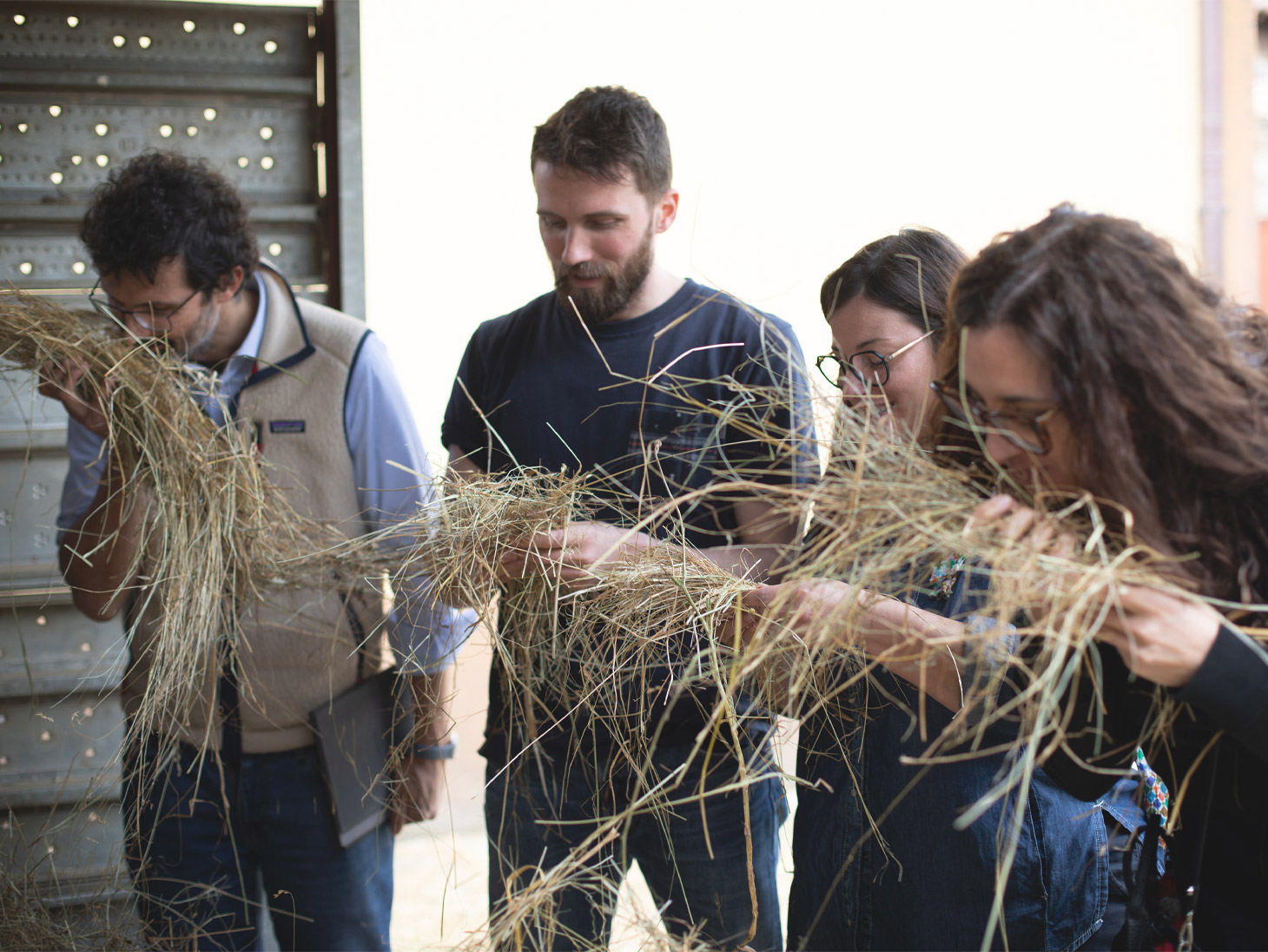
We follow, slightly breathless from the climb, Gianluigi, our guide, carrying a bunch of big iron keys to open the heavy wooden doors. The feeling is that we are the only living souls in the place. With the protection of our guide, we are about to open the first cave: a single room carved out of the rock, reminiscent of the more famous "Sassi di Matera", and home to wooden ladders where hundreds of caciocavallo cheese are hung, illuminated by a feeble light, a huge wrought-iron gate that makes them look like prisoners.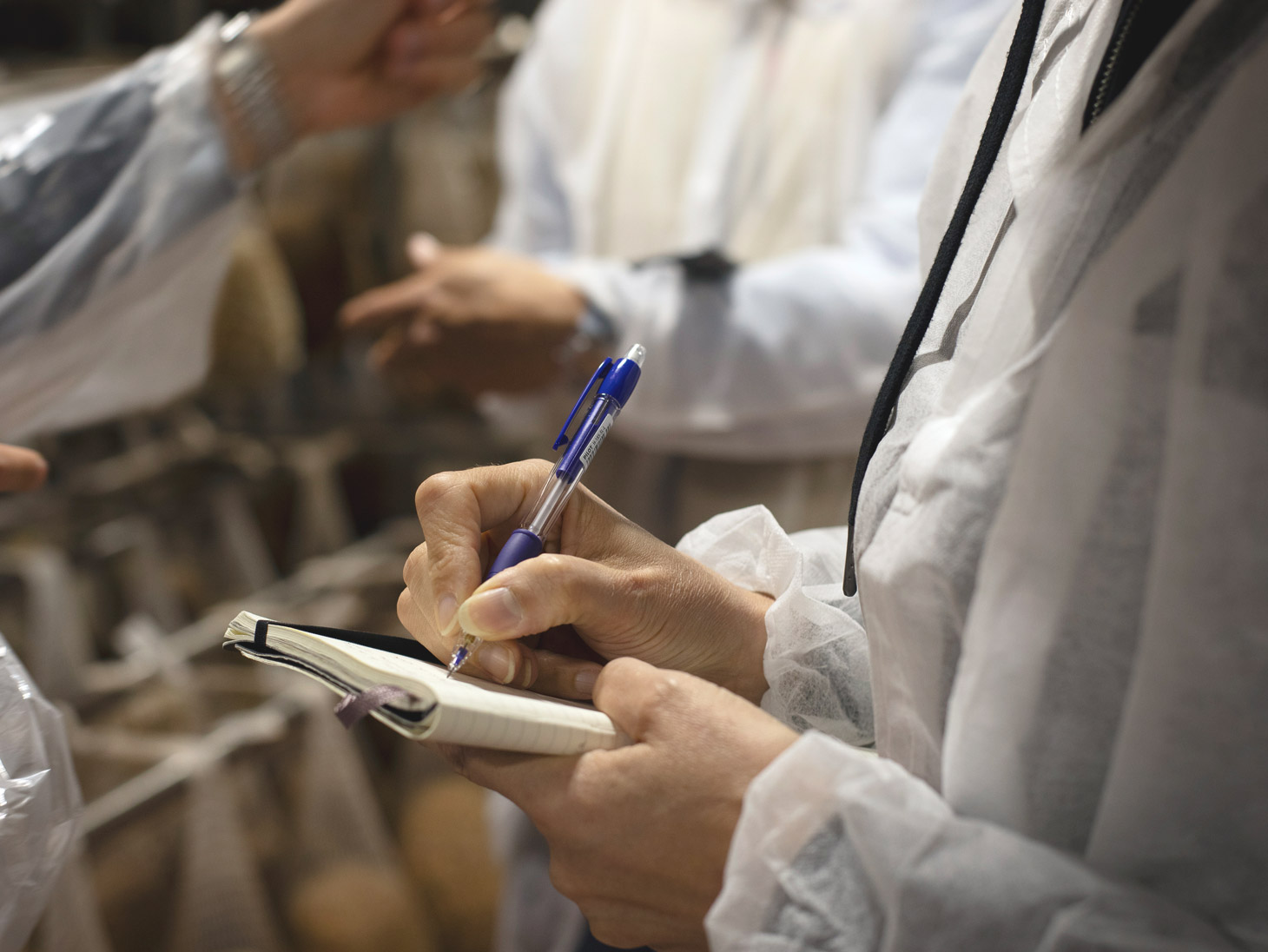
The caves are dug into sandstone rocks that create a unique microclimate for maturing cheeses, thanks to their special humidity, constant temperature around 13 °C and microflora. We visit "Il Frantoio", which has an ancient millstone at the entrance, then "La Tabacchiera" and "La Filanda": caves named after the way these spaces were once used. Here the caciocavalli are brought in by hand and hung one by one when they have reached an age of about two months.
They remain in the caves another four months, then return to the dairy, where they are brushed and cleaned of the natural mould they have developed on the rind. We leave the history, that we breathe in the village, to move to a totally modern context: the dairy, located in the town's industrial area and dedicated exclusively to the production of pasta filata cheeses.
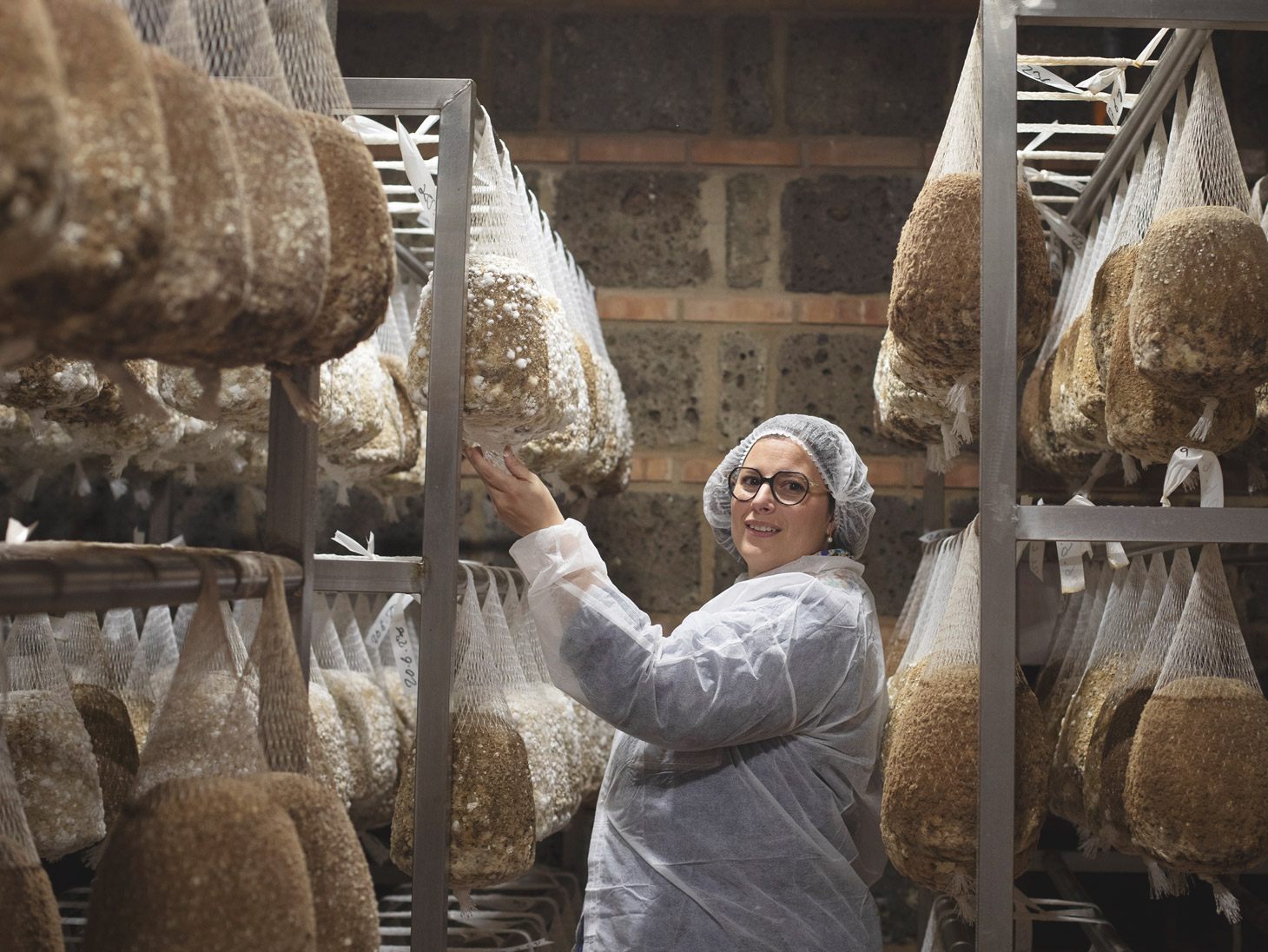
Set up in 2001 to transform and valorise the milk produced by the family farm and recently expanded in 2019, the dairy processes 11-12 tons of milk every day, collected directly from 40 farmers. On arrival, the milk undergoes routine checks and is sorted by origin: milk from Volturara Irpina is dedicated to the production of Pascolino, milk from Irpinia to the production of Caciocavallo Irpino, and milk from Basilicata to Schiena d'Asino.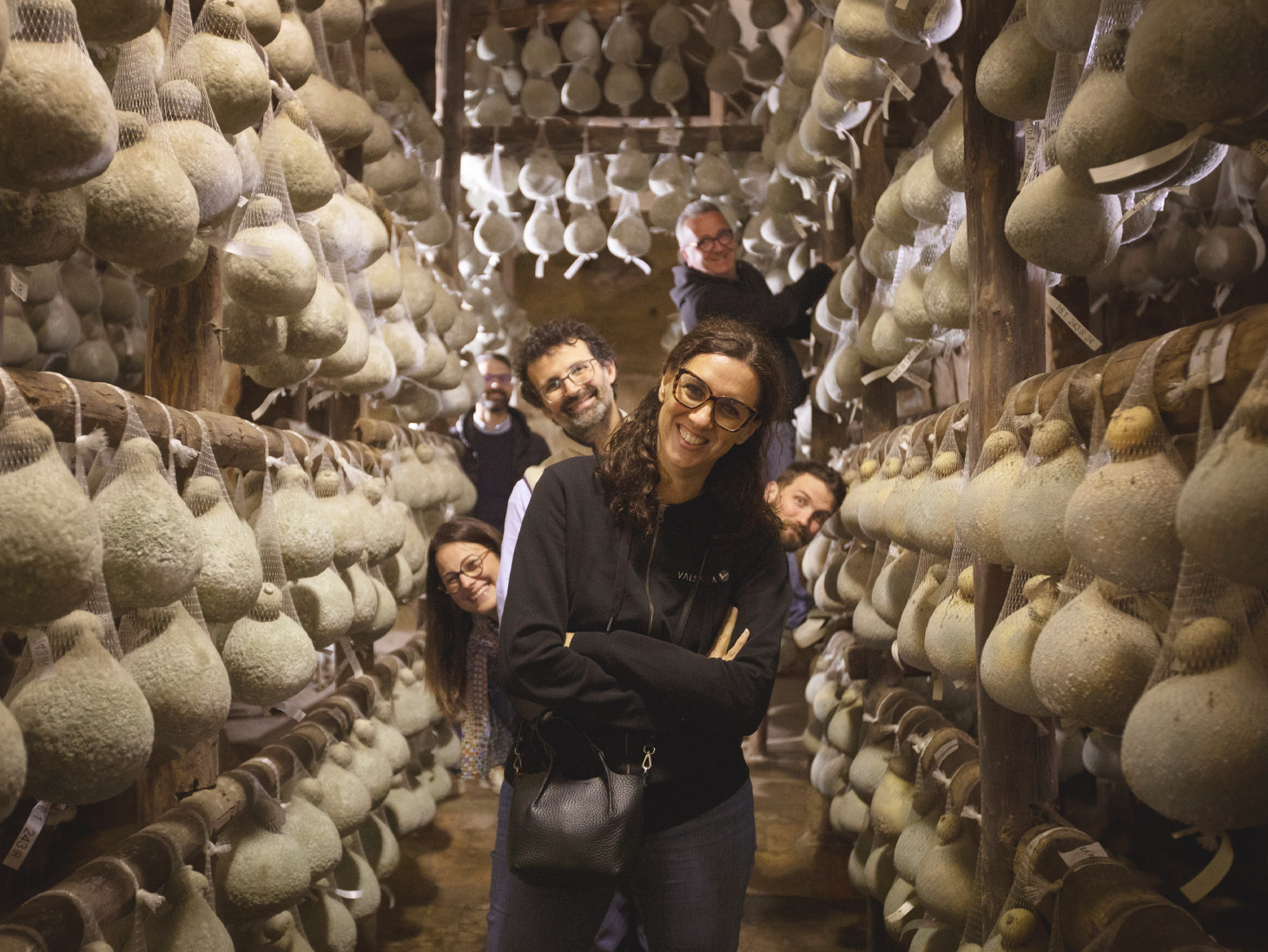
We witness the processing of the young Caciocavallo Irpino: the milk is transferred to the multi-purpose boiler, the self-produced whey starter is added and, after a 20-minute pause, the actual processing begins. Kid rennet is used for the caciocavalli, whereas the Schiena d'Asino follows a different processing method: no whey starter is used but propionic ferments - in order to obtain the characteristic bigger eyes - and calf rennet.
The curd is broken when it reaches the right pH, then left to ripen for 3-4 hours on the stainless steel tables before stretching. It is the cheesemaker who defines the right timing: a mix of pH control and the experience of judging how the curd responds by hand.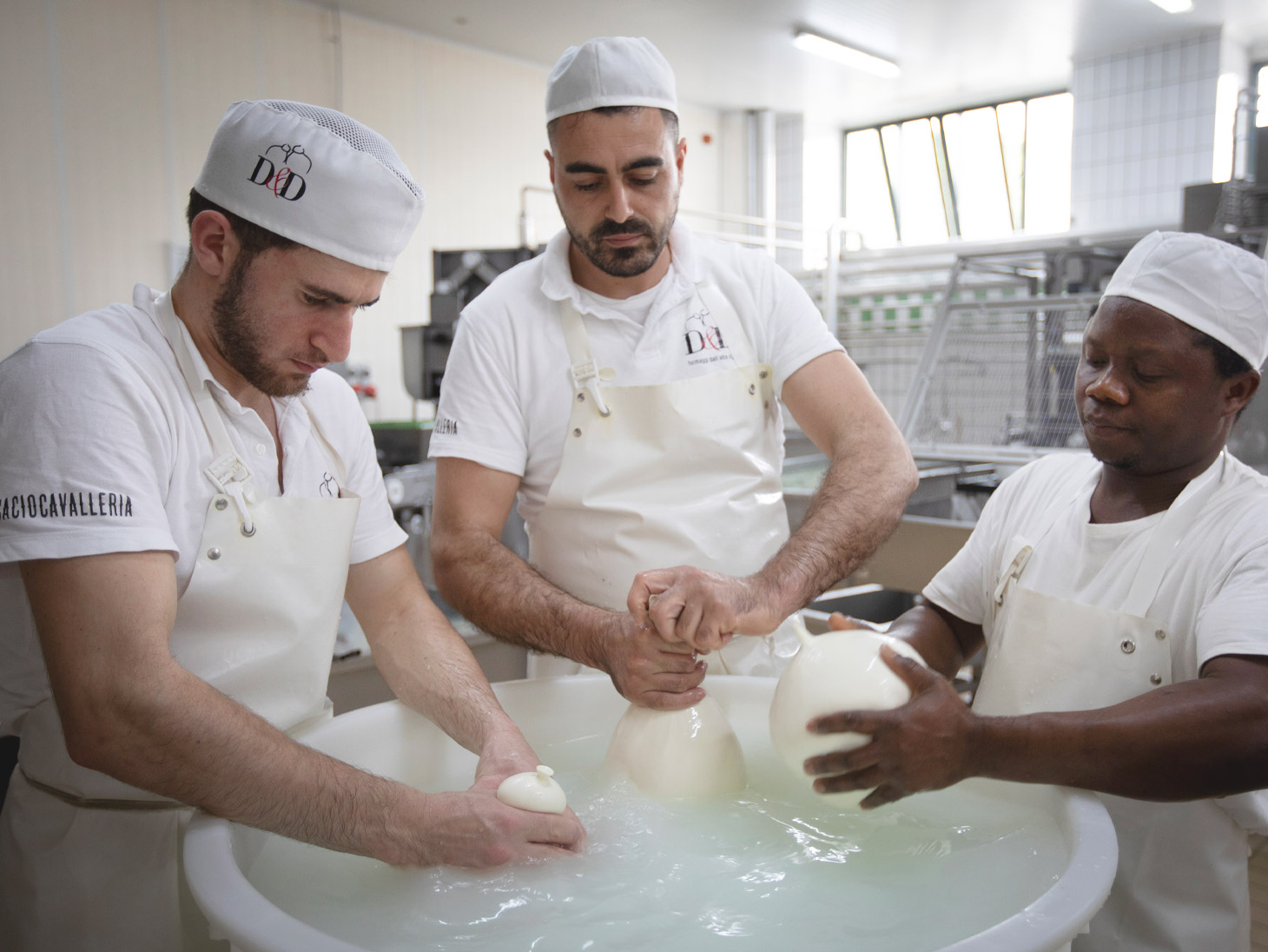
The stretching is automated - the curd is cut into blocks, minced and transferred to the stretching machine - while the final moulding of the caciocavalli is done by hand: the manual skill of these guys is incredible, all in a circle around a tub of water at 65-75 °C, where the caciocavalli are immersed and worked with their hands to obtain the characteristic head.
The resting phase in the water is also very important, Luigi tells us, that it allows the formation of a thin rind and subsequent uniform maturing, without cracks or splits: the caciocavalli rest for 3 hours in the cooling vats at 15-20 °C, and are then transferred to the saturated brine vats at 24-25%, at a temperature of 18 °C, where they stay for an average of 12 hours per kg of product.
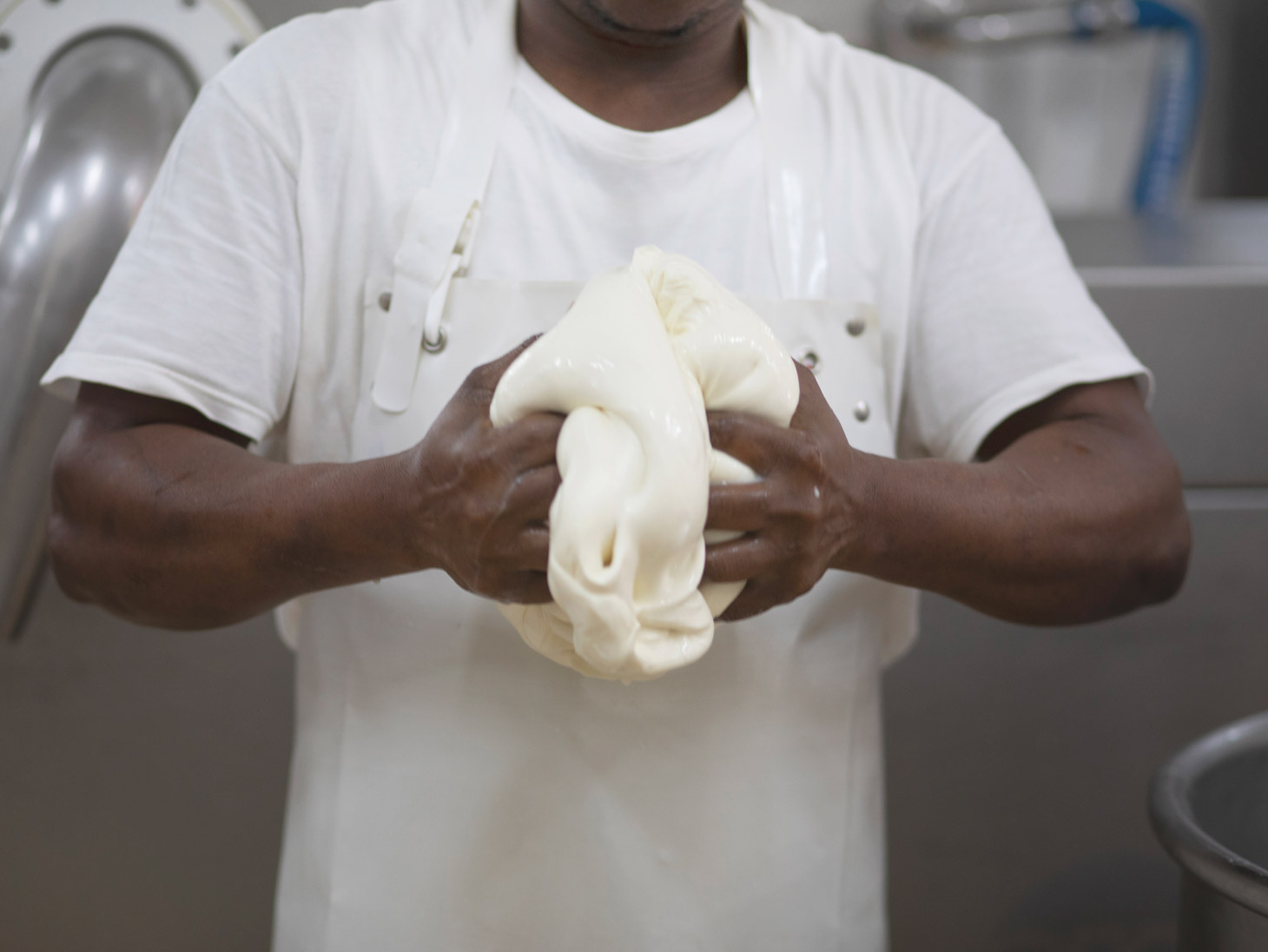
While maintaining a good dose of craftsmanship, the feeling is that of being in a well-structured, clean and tidy dairy: "9 people work in production today, out of 15 employees, to make around 350 caciocavalli per day". From the brine, caciocavalli are transferred to the drying cells: 7 days - 15-20 days for Schiena d'Asino - in a room with 50% humidity, to allow gradual drying and avoid bitter notes.
After drying, the cheese moves on to the first maturing cell: at least two months at 9 °C, in cells with high humidity. After two months, caciocavalli are transferred to the cave (Caciocavallo Irpino di Grotta), or to the stone-walled cellar below the dairy (the others).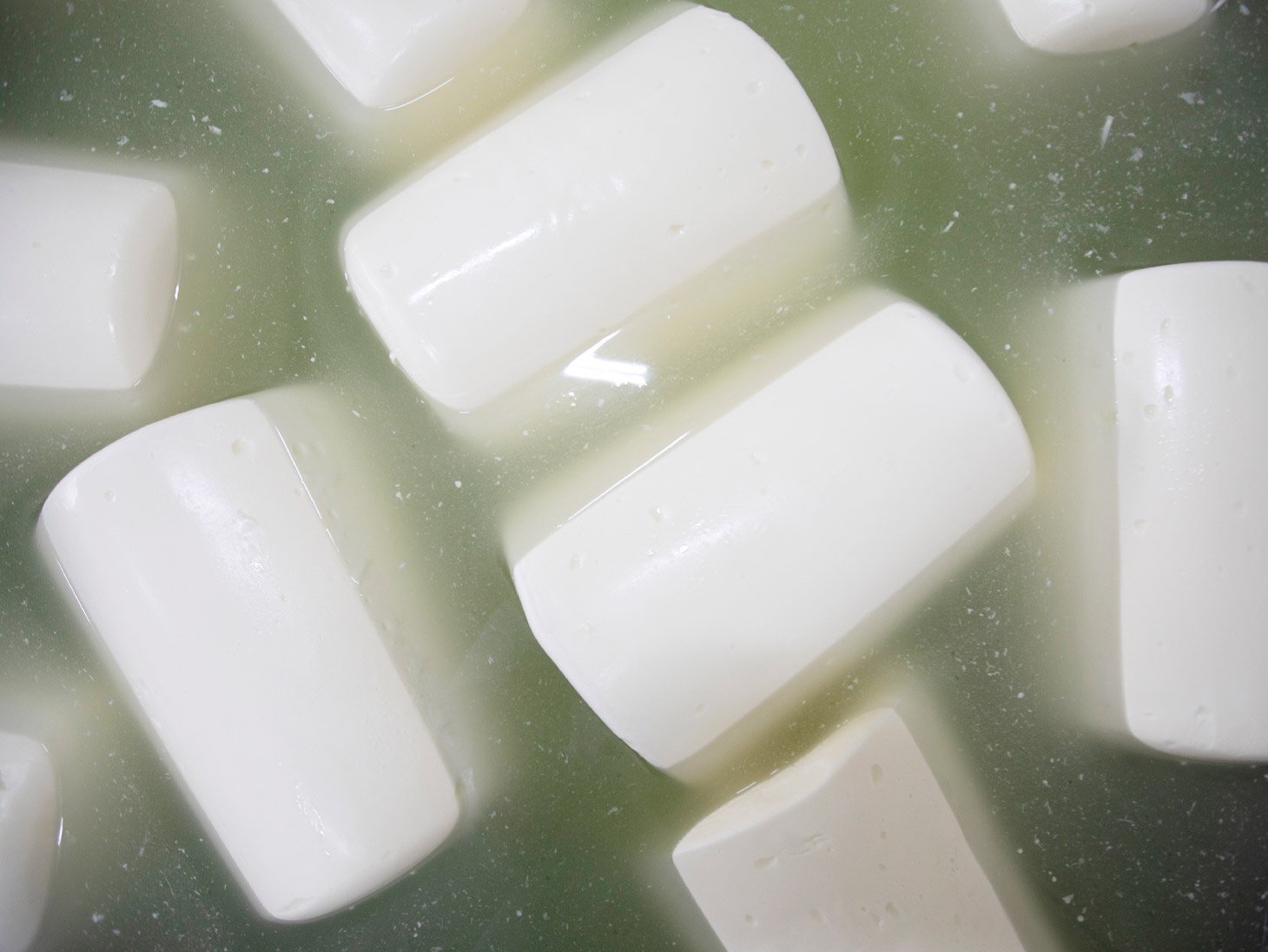
Luigi is a force of nature: in recent years, he has become passionate about affinage, so in 2017, together with his wife Enza Fiordellisi, he decided to renovate the barn, which stood next to the stable - and was also the original site of the dairy, later moved to the industrial area of the town. "Il Fienile" was born: a bio-building project, an affinage room, with a contemporary design, perfectly integrated into its natural surroundings.
Natural aluminium, pressed rock blades, Tuscan sheep's wool used as insulation: materials that change over time and "mature like cheese", a timed waterfall inside to give humidity to the rooms, a surprise you would not expect to find in the mountains of Irpinia. For the past four years, Luigi has been refining his caciocavalli and a few cheeses produced by local farms: the cheeses are matured not only in hay or marc, but also in earthenware and refined with unusual ingredients, such as pecorino with lavender, sage or star anise.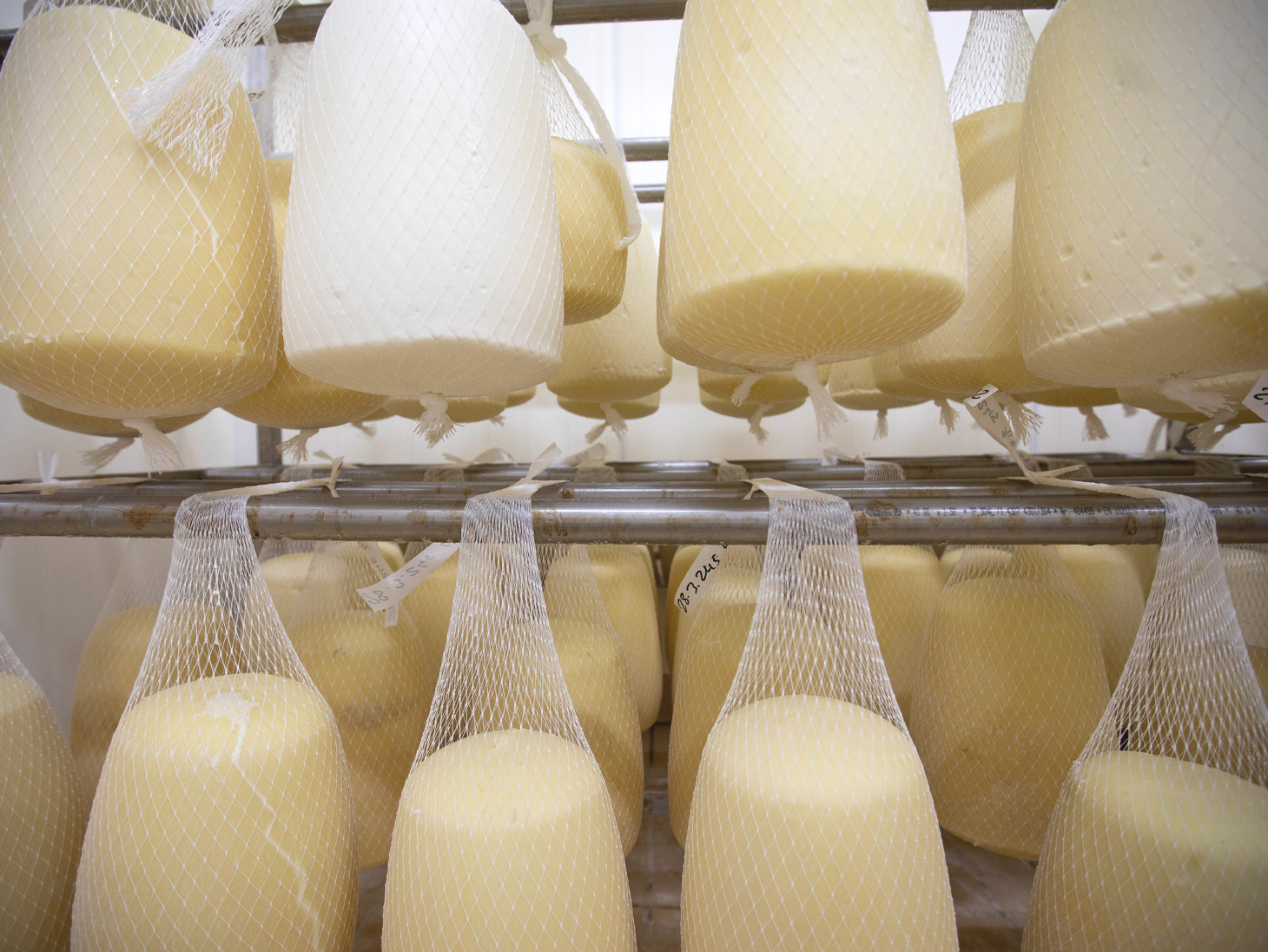
Curious cheeses with a personality, still able to narrate the extraordinary territory of Irpinia. But let's talk about the part of the trip that most excited us: the visit to the farmers, on the Piana del Dragone in Volturara Irpina, whose milk is used for the production of Pascolino.
We meet Stefano, Delfina, Carmine, Dora, Ferdinando: in their eyes the love for animals, the bond with the land from which they come, the unreserved adherence to a life of hard work, with the sad awareness that it will be difficult for anyone after them to carry on their farms. 16 small stables, with an average of 8-9 animals per stall, of the most diverse breeds: from Bruna to Jersey, from Friesian to Pinzgauer, mestizo breeds able to withstand the cold winters.
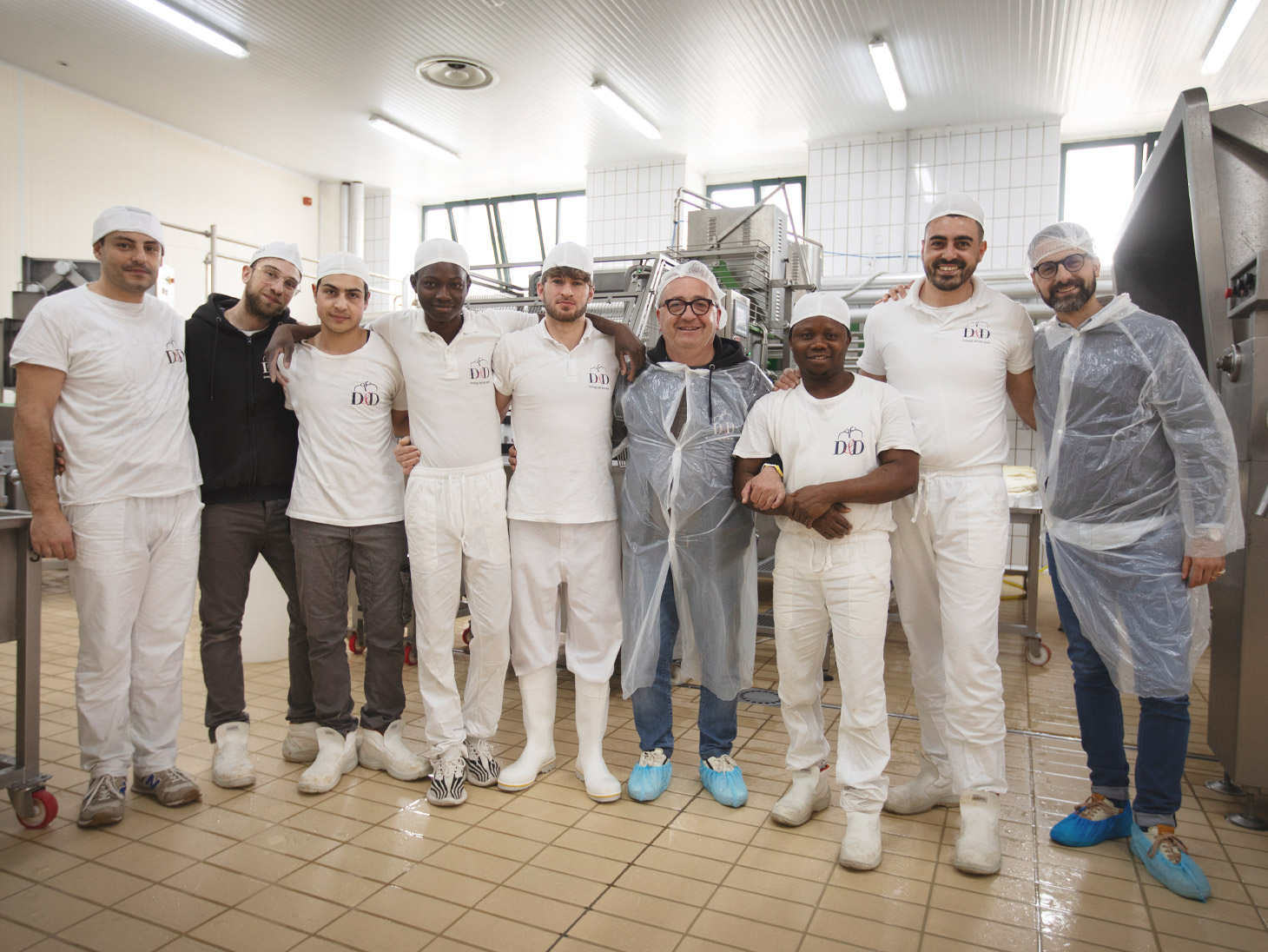
Small family farms, where the animals are fed on pasture nine months a year, grass in the stall also during milking, and the remaining three months in the barn with self-produced hay. Luigi - the milkman - also accompanies us on the tour: he has been collecting the milk from these farms for forty years, in an area of more than 30 km in the Picentini Mountains, with an altitude between the 700 metres of the Piana del Dragone and the 1800 metres of Monte Terminio.
Every day, Luigi does the same milk-route: "when I accompanied my dad, it snowed a lot here in winter and they would put chains on the lorry up to 15 times", he tells us. The landscape is astonishing, the lush, green plain, because of its richness in water-bearing strata, extensive pastures embraced by the mountains: 900 hectares of meadows where four wells and as many drinking fountains have been built to allow the herds to graze freely.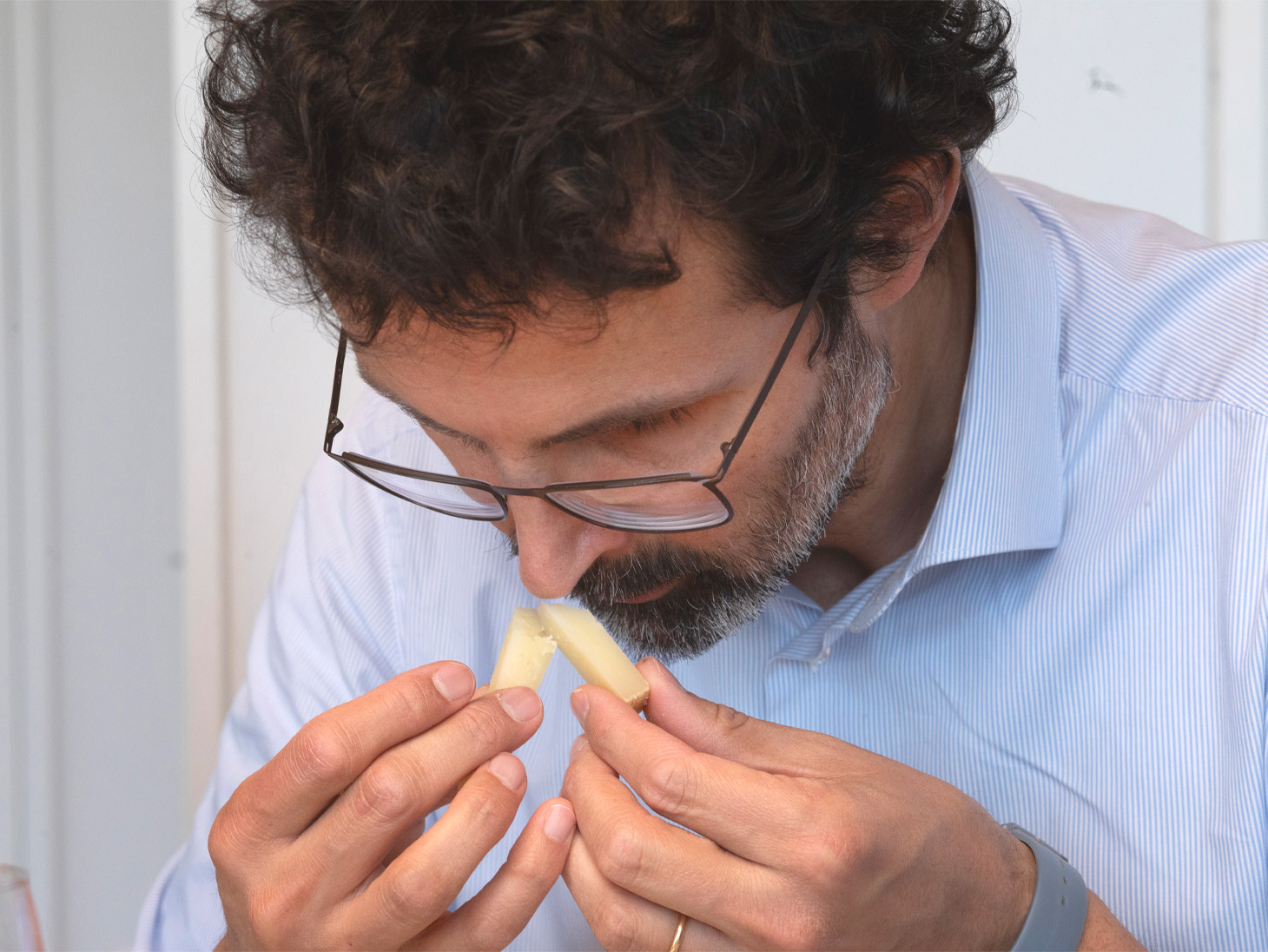
A truly uncontaminated place, a heritage of fodder essences that we find in the Pascolino, during the final tasting that we cannot miss. Gratitude, towards Luigi, Enza, and all the farmers who opened their homes to us, even offering us "sfogliatelle". Amazement, for having discovered a very green place that we would not have expected in Campania. Responsibility, to recount the value of these cheeses, and to ensure that they are not lost in the years to come. These are the emotions that accompany us as we return home, grateful for the opportunity.





